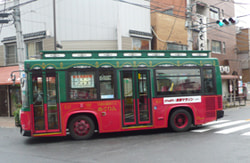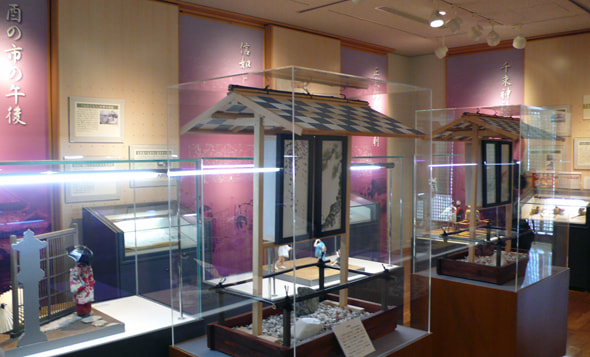
On the 3rd floor, scenes in Ichiyo's novels are reproduced with models.
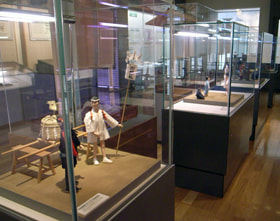
"Model of Tamagiku Toro" (created by Hiroshi Miura, right) -- "Tamagiku Toro" was an event in Nakano-machi, which comforted the spirit of "Tamagiku," a courtesan at a bordello "Nakamanji-ya" in Sin-yoshiwara Sumi-cho. Teahouses on both sides of the street placed this lantern in front of their houses. Tamagiku is said to have had both wit and beauty, and have been good at tea ceremony, flower arrangement, popular linked verse and koto music. She died at the age of 25 in 1726.
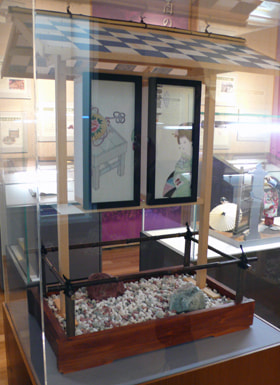

"Model of Tamagiku Toro" (created by Hiroshi Miura, right) -- "Tamagiku Toro" was an event in Nakano-machi, which comforted the spirit of "Tamagiku," a courtesan at a bordello "Nakamanji-ya" in Sin-yoshiwara Sumi-cho. Teahouses on both sides of the street placed this lantern in front of their houses. Tamagiku is said to have had both wit and beauty, and have been good at tea ceremony, flower arrangement, popular linked verse and koto music. She died at the age of 25 in 1726.

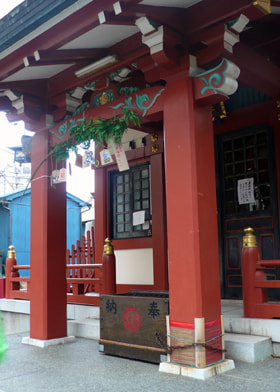
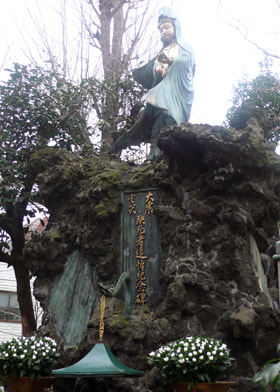
There are Yoshiwara Shrine (above) and a lot that was once Shin-yoshiwara Hanazono-ike Pond (Benten-ike Pond) (right) in the vicinity of the Ichiyo Memorial Museum.
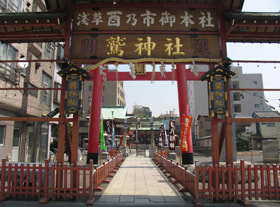
According to ancient documents stored in Otori Shrine, Prince Yamatotakeru, on his way home from the conquest of "Togoku," or eastern countries, rested his pitchfork on the small shrine of Amenohiwashino-mikoto, and celebrated his victory. It is said that Prince Yamatotakeru visited the shrine on the Day of the Cock so festivals have been conducted on the day. "Tori-no-ichi," or cock fair, has been developed as a seasonal event which announces the advent of winter since the mid Edo Period. The Asakusa area, with Asakusa Kannon, Shin-yoshiwara and Saruwaka-machi Playhouse, was especially crowded.
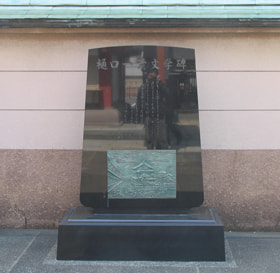
In the precincts of Otori Shrine, Ichiyo Higuchi's literary monument (above) and a monument inscribed with a text from Ichiyo's letter to her teacher "Tosui Nakarai" stand along with Shiki Masaoka's monument inscribed with "Zatto ya Kumade Oshiau Tori-no-ichi" and Kikaku's, a haiku poet, monument inscribed with "Haru wo Matsukoto no Hajime ya Tori-no-ichi."
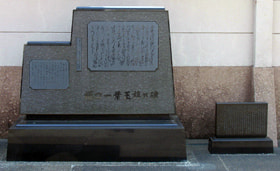
Ichiyo's monument "Tamazusa-no Hi," on which a text from unpublished letters sent to her teacher "Nakarai" are inscribed
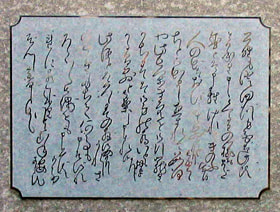
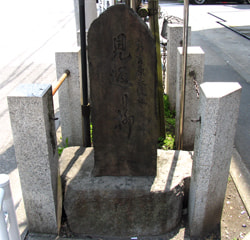
Monument of "Mikaeri Yanagi," (A willow of looking back)
It is called "Mikaeri Yanagi" because customers, who visited a red-light district, used to stop around it and look back at the district with reluctance on their way home. Around the Ichiyo Memorial Hall, there are shrines, temples and a lot that was once Shin-yoshiwara, which are settings of "Take-kurabe." The old days can be imagined. (Senzoku, Taito City)
Taito City Loop Bus "Megurin"
To visit the Ichiyo Memorial Hall, you can get off the Taito City Loop Bus "Kita Megurin" at the bus stop "Ichiyo Memorial Hall." Click here to see its timetable and route map.

Monument of "Mikaeri Yanagi," (A willow of looking back)
It is called "Mikaeri Yanagi" because customers, who visited a red-light district, used to stop around it and look back at the district with reluctance on their way home. Around the Ichiyo Memorial Hall, there are shrines, temples and a lot that was once Shin-yoshiwara, which are settings of "Take-kurabe." The old days can be imagined. (Senzoku, Taito City)
Taito City Loop Bus "Megurin"
To visit the Ichiyo Memorial Hall, you can get off the Taito City Loop Bus "Kita Megurin" at the bus stop "Ichiyo Memorial Hall." Click here to see its timetable and route map.














